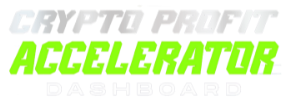Learn how to build your first Web3 dApp and gain a better understanding of decentralized technology while at the same time giving users transparent and secure interactions. This quick guide covers everything from planning your app to connecting a finished frontend.
Key Takeaways
-
Identifying your dApp’s core purpose and audience helps shape a clear development path.
-
Popular choices like Node.js, Hardhat, and Solidity streamline the coding workflow.
-
Writing, compiling, and testing smart contracts ensures reliable on-chain functionality.
-
A React or similar frontend framework links user actions to blockchain interactions.
-
Deployment on testnets before mainnet helps iron out any issues.
What Is a Web3 dApp?
A Web3 decentralized application (dApp) is built on blockchain technology, allowing direct interaction between users and smart contracts without the need for centralized intermediaries. By leveraging these distributed networks, a dApp offers a transparent and tamper-resistant approach to digital services, from financial tools to gaming ecosystems.
Step 1: Plan Your dApp
Begin by outlining the main features of your dApp and identifying its target audience. Highlight specific features like token issuance, NFT functionality or other blockchain-enabled components. Outline the core value proposition and how your dApp will use decentralization to provide a unique experience.
Step 2: Choose Tools and Frameworks
Choosing the right stack is key to a smooth development process. Here are some common tools to consider:
-
Node.js and NPM: Manage project dependencies and scripts.
-
Hardhat or Truffle: Smart contract development, deployment and testing.
-
Solidity: The go-to programming language for Ethereum smart contracts.
-
MetaMask: Popular wallet integration for user authentication and transactions.
-
React.js or Similar: Build a responsive and interactive frontend interface.
These tools work together to make coding easier and blockchain interactions simpler.
Step 3: Set Up the Development Environment
After picking your toolkit, initialize your project and install the necessary dependencies. Below is an example using Node.js and Hardhat:
mkdirIf you prefer Truffle, install it globally:
npm install -g truffle Once the setup is complete, you’ll have a directory structure ready for coding and deployment.
Step 4: Write and Compile a Smart Contract
Smart contracts form the backbone of any blockchain-based application. Here’s a simple Solidity example:
Compile your contract with Hardhat:
npx hardhat compile If using Truffle, you can run:
truffle compile This step validates your code and prepares the artifacts needed for deployment.
Step 5: Deploy the Smart Contract
Launch a local development blockchain, such as the Hardhat built-in network:
npx hardhat node Create and run a deployment script:
npx hardhat run scripts/deploy.js --network localhost For real-world testing, deploy to a testnet (e.g., Ropsten, Rinkeby, or Goerli) through a provider like Alchemy or Infura. This way you can test transactions, interactions and performance before moving to the Ethereum mainnet.
Step 6: Build the Frontend
A user-friendly interface is vital. Choose a library or framework, such as React.js, to organize your UI components. Install a JavaScript library like Ethers.js or Web3.js to interact with your deployed contracts:
<Use your contract’s ABI and address to instantiate a contract instance. This enables functions like increment() to be called directly from your dApp’s user interface.
Step 7: Test and Iterate
Run thorough checks on both the contract logic and the frontend user journey. Start with your local network, then move on to a public testnet. Monitor transactions and confirm wallet interactions. After that, you should verify the results on a block explorer. Finally, adjust contract functions and UI elements to ensure a seamless experience.
Step 8: Launch
Once you’re confident in your dApp, deploy your smart contract to the Ethereum mainnet. Host your frontend using services like GitHub Pages or a cloud provider. Remember to keep your contract’s address and ABI accessible, so any updates to the frontend can be synced quickly.
Real-World Use Cases
Many successful dApps demonstrate how to build a Web3 dApp for a range of scenarios:
-
DeFi Platforms: Enable lending, borrowing, and yield-farming on decentralized networks.
-
NFT Marketplaces: Allow users to mint, buy, and sell digital art and collectibles.
-
Blockchain Gaming: Introduce NFTs for in-game assets and unique player items.
-
DAO Governance: Facilitate transparent voting systems and collective decision-making.
These examples underscore the versatility of dApps in delivering trust and ownership.
Frequently Asked Questions
Q: Do I need coding experience to develop a dApp?
A: Basic programming knowledge is helpful, especially in JavaScript and Solidity. Tutorials, documentation and online forums can help beginners.
Q: Which blockchain should I use for my first dApp?
A: Ethereum is a popular choice because of the large developer community and tooling support. But alternatives like Polygon, Binance Smart Chain or Avalanche can also be considered.
Q: How can I manage deployment costs?
A: Testing on local and public test networks helps to optimize gas usage. Gas optimization strategies like refining contract logic can further reduce costs on mainnet.
Q: What wallet options are best for users?
A: MetaMask is widely accepted but alternatives like WalletConnect, Coinbase Wallet and others that offer easy integration.
Q: Can I modify my smart contract after deployment?
A: Traditional smart contracts are immutable. If upgradability is needed, look into proxy contracts or frameworks like OpenZeppelin for upgradeable contract patterns.
Conclusion
By following these steps and best practices, you’ll be able to build a Web3 dApp with confidence. From drafting your project blueprint to refining the user interface, every step is crucial to create a truly decentralized, reliable and user-driven solution. Enjoy the growth of blockchain innovation as you continue to learn and improve.

